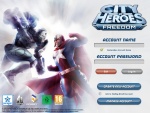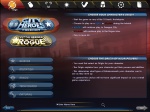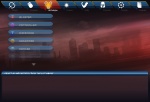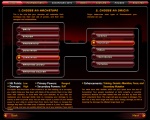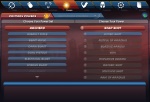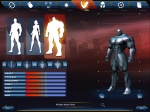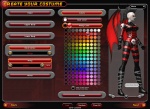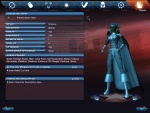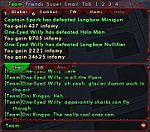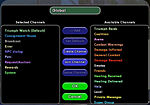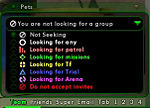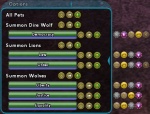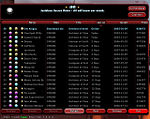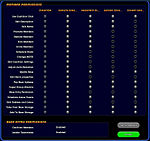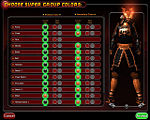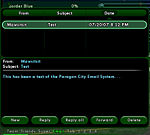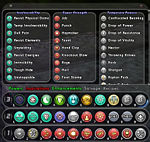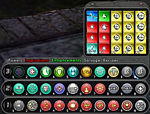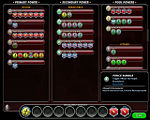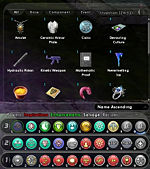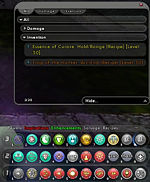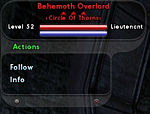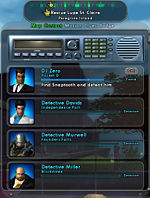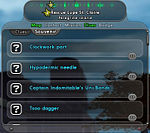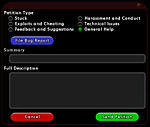Difference between revisions of "User:Eabrace/LivingGameManual"
m (→Search Window: typo fix) |
m (→Server Friends List: incremental save) |
||
| Line 536: | Line 536: | ||
======Server Friends List====== | ======Server Friends List====== | ||
[[Image:UI_Friends_Server.jpg|thumb|right|150px|Server Friends List]] | [[Image:UI_Friends_Server.jpg|thumb|right|150px|Server Friends List]] | ||
| + | Selecting "Server" from the dropdown list at the top of the Friends Window will display a list of characters who reside on your current server. The Server Friends list is specific to each character and may only contain characters on the same server with the same alignment. | ||
| + | |||
| + | The Server Friends list will display any friends who are currently online and visible in green, and will tell you where they are currently located in the game. Friends who are offline or hidden will appear in gray with a status of "OFFLINE". | ||
| + | |||
| + | Right clicking on a friend in your list will give you the following options: | ||
| + | * '''Chat''' - Send a Tell to your friend. ''(Only available when the character is currently online and visible.)'' | ||
| + | * '''Remove Friend''' - Remove this character from your friends list. | ||
| + | * '''Invite to Team''' - Invite your friend to a team. ''(Only available when the character is currently online and visible and you are either solo or your current team's leader.)'' | ||
| + | |||
| + | If you are in a Super Group, certain Super Group administrative functions may also be available. | ||
| + | * '''Invite to Super Group''' - Invite your friend to join your Super Group. | ||
| + | * '''Kick from Super Group''' - Remove your friend from your Super Group. | ||
| + | * '''Promote''' - Move your friend up one rank within the Super Group. | ||
| + | * '''Demote''' - Move your friend down one rank within the Super Group. | ||
| + | ''(For more information on Super Group administrative options, see [[#Super_Group_Window|Super Group Window]].)'' | ||
| + | |||
| + | To add a character to your Server Friends list, perform one of the following actions: | ||
| + | * Right click on the character and select "Add Friend." | ||
| + | * Right click the name of the character in your Team Window and select "Add Friend." | ||
| + | * Target the character and select "Add Friend" from the Action Window. | ||
| + | * Type the following command into the Chat Line: | ||
| + | :{{slashcommand|friend|<character_name>}} | ||
| + | |||
| + | To remove a character to your Server Friends list, perform one of the following actions: | ||
| + | * Right click on the character and select "Remove Friend." | ||
| + | * Right click the name of the character in your Team Window and select "Remove Friend." | ||
| + | * Target the character and select "Remove Friend" from the Action Window. | ||
| + | * Select the character's name in your Server Friends list and click the "Remove" button at the bottom of the window. | ||
| + | * Type the following command into the Chat Line: | ||
| + | :{{slashcommand|unfriend|<character_name>}} | ||
{{clr}} | {{clr}} | ||
Revision as of 22:08, 17 July 2007
Contents
- 1 Rough ToC Outline
- 2 Getting Started
- 3 Creating a Character
- 4 User Interface
- 4.1 Windows
- 4.1.1 Status Window
- 4.1.2 Chat Window
- 4.1.3 Team Window
- 4.1.4 Search Window
- 4.1.5 Pets Window
- 4.1.6 Friends Window
- 4.1.7 Super Group Window
- 4.1.8 Email Window
- 4.1.9 Tray Window
- 4.1.10 Powers Window
- 4.1.11 Inspirations Window
- 4.1.12 Enhancement Window
- 4.1.13 Salvage Window
- 4.1.14 Recipes Window
- 4.1.15 Target Window
- 4.1.16 Action Window
- 4.1.17 Nav Window
- 4.1.18 Contact Window
- 4.1.19 Misson Window
- 4.1.20 Clues Window
- 4.1.21 Badge Window
- 4.1.22 Menu Window
- 4.1.23 Help Window
- 4.1.24 Costume Window
- 4.1.25 I.D. Screen
- 4.1.26 Personal Info Window
- 4.1.27 Support Window
- 4.1.28 Options Window
- 4.1.29 Quit Window
- 4.1 Windows
- 5 Your First Game Session
- 6 Movement
Rough ToC Outline
(obviously this will go away once the real ToC matches this)
- System Requirements
- OK, maybe not, but it's in both of the manuals, so it's here for the time being.
- Entering the Game/Getting Started
- Creating a Character
- Choosing Alignment
- Selecting an Archetype
- Selecting an Origin
- Selecting Power Sets and Starting Powers
- Selecting a Gender and Build
- Selecting a Costume
- Scales
- Tailors
- Adopting a Moniker
- Character Description
- Battle Cry
- User Interface
- Windows
- Chat Window
- Friends Window
- Supergroup Window
- Team Window
- Pets Window
- Navigation Window
- Badges Window
- Contacts Window
- Map Window
- Fog of War
- Map Icons
- Waypoints and Tumbtacks
- Missions Window
- Power Trays
- Enhancement Tray
- Inspiration Tray
- Recipe Window
- Salvage Window
- Status Window
- Status Bars
- Options Menus
- Targeting Window
- Info Window
- Trade Window
- Targeting Recticle
- Your First Day on Patrol (or something like that)
- Movement
- Using Objects/Interacting with the Environment
- Fighting, Powers, and Other Actions
- Using Your Powers
- Taking Damage and Restoring Hit Points
- Damage Displays in Combat
- Powers, Endurance, and Recharge
- Color Coding
- Combat Options
- Powers
- Powers Terminology
- Power Outer Ring Key
- Leveling Table
- Inherent Powers
- Origin Powers
- Pool Power Sets
- Hero-Specific Power Sets
- Blasters
- Blaster Inherent Powers
- Blaster Primaries
- Blaster Secondaries
- Blaster Ancillaries
- Controllers
- Controller Inherent Powers
- Controller Primaries
- Controller Secondaries
- Controller Ancillaries
- Defenders
- Defender Inherent Powers
- Defender Primaries
- Defender Secondaries
- Defender Ancillaries
- Scrappers
- Scrapper Inherent Powers
- Scrapper Primaries
- Scrapper Secondaries
- Scrapper Ancillaries
- Tankers
- Tanker Inherent Powers
- Tanker Primaries
- Tanker Secondaries
- Tanker Ancillaries
- Kheldians
- Kheldian Inherent Powers
- Peacebringers
- Warshades
- Villain-Specific Power Sets
- Brutes
- Brute Inherent Powers
- Brute Primaries
- Brute Secondaries
- Brute Patron Powers
- Corruptors
- Corruptor Inherent Powers
- Corruptor Primaries
- Corruptor Secondaries
- Corruptor Patron Powers
- Dominators
- Dominator Inherent Powers
- Dominator Primaries
- Dominator Secondaries
- Dominator Patron Powers
- Masterminds
- Mastermind Inherent Powers
- Mastermind Primaries
- Mastermind Secondaries
- Mastermind Patron Powers
- Stalkers
- Stalker Inherent Powers
- Stalker Primaries
- Stalker Secondaries
- Stalker Patron Powers
- Rewards
- Experience
- Influence/Infamy
- Prestige
- Inspirations
- Enhancements
- Types of Enhancements
- Enhancement Origins
- Enhancement Strengths
- Combining Enhancements
- Salvage
- Recipes
- Missions
- Contacts
- Clues
- Story Arcs
- Policeband/Newspaper Missions
- Safeguard/Mayhem Missions
- Mission Types
- Team Ups
- Team Leaders
- Team Ups and Missions
- Sidekicks/Lackeys and Exemplars/Malefactors
- Task Forces and Trials
- Supergroups
- Bases
- Coalitions
- Trading
- Slash Commands, Macros, Keybindings, and Emotes
- Slash Commands
- Macros
- Keybindings
- Emotes
- Options
- General
- Controls
- Graphics and Audio
- Zones
- Paragon City
- The Rogue Isles
- Shared Zones
- PvP Zones
- Pocket D
- Rikti War Zone (?)
- Enemy Groups
- Player Vs. Player
- Glossary
- Credits (?)
Getting Started
To enter City of Heroes or City of Villains, complete the following steps:
1. Install the game to your hard drive.
2. Double-click on the shortcut on your desktop or use the Windows Start menu to launch the Updater.
3. Each time you launch the game it will bring up the Updater to check for and (if there are any) automatically load any updates posted by the design team. Follow the on-screen prompts to proceed to load the game.
4. On the main log-in screen, enter the account name and account password for your [PlayNC] account.
5. Select the server on which you wish to play. When selecting a server, check the colored bubbles next to the server name. The more bubbles, the more people that are currently on the server. If a server has too many people already, you won’t be able to choose it.
6. When you select your server, you may choose a character you’ve already created and begin play, or you may choose to create a new character. You may create several characters on any given server. You may also delete a previously created character to free up a character slot. Note that once a character is deleted, he or she is irretrievably gone.
7. If selecting an existing character, click on "Enter Paragon City" or "Enter the Rogue Isles" to proceed.
Creating a Character
Choosing Alignment
The choice of alignment is the single most important decision you will make for your character.
If you have only either City of Heroes or City of Villains, this decision is easy since you will only have one option available. If you have both City of Heroes and City of Villains, you will have to decide on whether your character will be a Hero or a Villain.
Will you confront super villains, aliens, madmen, criminals, and other fearsome foes in Paragon City? Will you take on the responsibility of protecting the sprawling metropolis and its citizens from the clutches of evil?
Or will you choose to take part in the fight for survival of the fittest on the Rogue Isles? Will you commit heists, kidnappings, and infiltrations on your way to fulfill your destiny as a legendary arch-criminal?
Selecting an Archetype
Your Archetype determines the nature of your powers, granting you access to specific Primary and Secondary Power Sets. It is also the second most important choice you will make in your character creation. Each Archetype has its own unique powers, abilities, and pros and cons; choose wisely as this choice is permanent. When you first begin play, five Archetypes will be available to select from. You may be able to unlock other Epic Archetypes in the future.
Hero Archetypes
Villain Archetypes
Selecting an Origin
Your Origin is the source of your powers. Were you born with them, or did you study for long months and years to perfect them? Or perhaps you acquired them after some encounter with mysterious forces?
An origin ultimately determines what types of enhancements your character has access to. Origins do not impact your character's power levels or abilities. It just adds a bit of flavor to your characer, since it determines what grants you your powers with which to either save or wreak havoc on the world.
In addition, each origin grants a different inherent attack available at level 1. Each of these powers is ranged and does minor damage of some form. Most of these powers also have a weak, short-duration secondary effect.
The origin you select for you character will also determine which additional Titles are available for your character at level 25.
There are five origins available for selection:
Selecting Power Sets and Starting Powers
At this point, the real fun starts as you select a Primary Power Set and your first power. After that, you choose a Secondary Power Set and a second power, which complements your first power. The sets available to you will be deterimined by the Archetype you selected.
A Power Set is a group of nine related powers. You begin with the powers at the list's top and can gain additional powers as you progress through the game. Your level in the game determines which powers you have access to. The powers at the top of each list are, in general, more basic. You won't have access to the more exotic and complex powers until much later in your career.
The Primary Power Set is the basis for all the powers you wield throughout the course of the game; this is the third most important choice you make when creating an alter ego. You will initially be able to select either of the first two powers in the Primary Power Set. Your Secondary Power Set will support your Primary powers, and you will be able to select only the first power in the set at character creation.
Selecting a Gender and Build
It's now time to choose the body type for your character's avatar. You may select a Female, Male, or Huge body type from the radio buttons at the top of the Body Type screen.
In addition, you can further customize your avatar's build by preselecting one of the default body types:
- Slim: Your avatar is svelte and has minimal body mass.
- Average: Your avatar is of average build.
- Athletic: Your avatar has good muscle definition. This is the default body style.
- Heavy: Your avatar is above average in weight and muscle.
You can then further tweak your avatar's build by adjusting the following sliders:
- Short/Tall: This will adjust how tall your avatar is. Moving the slider to the left will make you shorter. Moving to the right will make you taller. Unlike the other settings, this will be permanent and may not be altered in the interface at the tailor.
- Physique: This will adjust how muscular your avatar is. Moving this to the left will make your character have less muscle mass, and moving this to the right will give them more.
- Shoulders: This will adjust the width of the avatar's shoulders. Moving this to the left will make the shoulders narrower, moving this to the right will make them broader.
- Chest: This will adjust the circumference of the avatar's chest. Moving this to the left will make the chest smaller, and moving to the right will make the chest bigger.
- Waist: This will adjust the width of the avatar's waist. Moving this to the left will make it narrower, and moving to the right will make it wider.
- Hips: This will adjust your avatar's hip size. Moving this to the left will make your hips narrower, and moving to the right will make them wider.
- Legs: This will adjust the length of your avatar's legs without scaling the rest of the body in proportion. Moving this to the left will shorten the legs, and moving to the right will lengthen them.
Selecting a Costume
Creating a unique costume for your character is one of the most enjoyable tasks in character creation. Although there are literally millions of possible unique costume combinations, the costume design process is run and easy if you just take it step by step.
Costume Editor
Character Display Window
At the far right of the screen you will see your character displayed with the current options selected shown. As you alter to your costume, the window will update to reflect your changes. The costume design screen allows you to rotate your figure at will by clicking on either of the curved arrows at the bottom of this window. You can also zoom in on the upper body and head by clicking the plus sign between the arrows. Click again to zoom back out.
Skin Color
First, select your character’s Skin Color. Click on the Skin Color bar in the middle of the screen. Now select a colored dot to adjust the color of your character's skin.
Costume Colors
Next, click on the bar below the Skin Color palette. If you want to coordinate your costume easily, you may use the Copy Current Colors button at the bottom of the color palette. This will make your entire costume conform to the two colors currently selected. Changing either of the two colors will cause the change to be made throughout the costume. If you want to color each piece of your outfit differently, make sure that the Copy Current Colors button is not selected.
Costume Pieces
Now, work from top to bottom on the left of the screen, start with the Head. Here you can select from a wide variety of hairstyles, masks, helmets, glasses, and some more exotic options.
Next, move on to the Upper Body. You will be able to adjust your torso, shoulders, gloves, and belt here.
Last is the Lower Body. Here you can adjust the options for your legs and boots.
Scales
Clicking on the Scales bar in the middle of the screen will bring up two sets of sliders.
The first set will be a series of sliders that will allow you to adjust your character's facial features. For each facial feature, the leftmost slider will adjust the width, the middle will adjust the height, and the furthest right will adjust the depth.
The following features may be fine-tuned:
- Head: The overall size of the head.
- Brow: The area above the eyes and below the hairline.
- Cheek: The area to the left and right of the nose and mouth, extending back to the ears.
- Chin: The area from below the mouth to the neck.
- Cranium: The area from above the brow and ears to the back of head.
- Jaw: The areas to the left and right of the chin, below the cheeks.
- Nose: The area between the eyes and above the mouth.
The second set of sliders is for the Body and is identical to the sliders on the Body Type selection screen, but do not include the height adjustment bar.
Tailors
A character's identity is tied to their costume almost as much as their name. There are special stores in the game where you are allowed to change your look. For Heroes, there are Icon tailor shops located in Steel Canyon, Independence Port, and Founders' Falls. Villains may visit the Facemaker shops in Cap au Diable or St. Martial.
For more information on costumes, see the main article: Costumes
Adopting a Moniker
This is the last step in character generation. Before beginning play, you must select a suitable name for your Hero or Villain. On the same screen, you may also enter a brief description of your character and a Battle Cry.
When choosing a name for your character, you are limited to a maximum of 20 characters, including spaces.
When you are ready, click the button in the lower right corner of the screen to enter either Paragon City or the Rogue Isles.
If you were successful, your character will be complete and you may now begin play.
If you chose a name that is already in use on your current server, you will have to change the name of your character and try again. Be patient as it make take several tries to find a name that is not already in use.
Character Description
Your Character Description can be edited at any time by opening your Character ID and typing in the Character Description field. If you wish, you may copy from any text document and paste to this window. You are limited to a maximum of 1023 characters (including spaces and carriage returns) in the Character Description field.
Battle Cry
Your character's Battle Cry may be edited at any time by opening your Character ID and editing the Battle Cry field. You are limited to a total of 32 characters (including spaces) in this field. By default, when you press the F10 key on the keyboard, your character will shout out their battle cry and perform the "attack" emote.
User Interface
Windows
Status Window
The following additional windows may be accessed from the Status Window:
- Chat
- Tray
- Target
- Nav
- Menu
The Status Window displays the following:
Status Bars
- Hit Point Bar - The top bar in the display indicates the amount of Hit Points you currently have remaining. The maximum length of this bar is constant, regardless of how many Hit Points you gain as your level increases. As you take damage, the bar will begin to empty at the right, shrinking toward the left. At any time that the bar is greater than INSERT % HERE full the bar will appear green. As you take damage and lose Hit Points, the bar will begin to shrink toward the left. When the bar reaches INSERT % HERE, the color of the bar will change to yellow. When the bar reaches INSERT % HERE, the color of the bar will turn orange. When the bar reaches INSERT % HERE, the color of the bar will change to red. When the bar is empty, you have been defeated.
- Endurance Bar - The second bar indicates the amount of Endurance you currently have remaining. If the bar is completely full, you have 100% of your available Endurance currently available. As you consume Endurance by using powers or from being attacked by Endurance draining effects, your bar will shrink to the left. When your bar is completely empty, you will not be able to activate any powers that require Endurance.
- Special - Some Archetypes have a third bar that indicates levels of buildup for inherent powers.
- Defiance Bar - As a Blaster builds Defiance, this bar will fill from left to right. The further to the right the bar fills, the stronger the Defiance effect.
- Domination Bar - As Dominators attack, this bar will fill from left to right. When the bar reaches 90% full, the Dominator's Domination ability will become available. The bar will then remain full until Domination drops, at which point the bar will clear to 0%.
- Fury Bar - As Brutes build Fury, this bar will fill from left to right. The further to the right the bar fills, the stronger the Fury effect.
- Experience Bar - The bar at the bottom of the display, along with the identically colored segments arranged in a crescent on the right of the display, indicate the amount of experience you have gained toward your next level. As you gain experience, the bar will fill from left to right. When this bar reaches 100%, it will clear to 0% and fill one of the segments (often referred to as "dots" or "bubbles") to the right. Each filled bar represents 10% of the experience required to reach your next level. When you fill the tenth bar, the bar and all filled segments will clear and be replaced by a green arrow pointing up in the center of the crescent outline. This green arrow indicates that you have gained an experience level and should seek a trainer soon.
- XP Debt - When you accrue debt, the approximate amount of debt you currently own is shown as a dark-shaded area on the right side of your Experience Bar (and bubbles if you have enough). If your debt extends far enough to fill all of your XP bubbles, then you will continue to pay off debt even after reaching your next level.
Status Numbers
At any time, if you leave your mouse pointer hovering over the Status Bar display without pressing any keys on the keyboard, after a few seconds you will see a popup window appear with information on the actual numbers represented by the percentages displayed in the bars.
Supergroup Mode Indicator
When in Supergroup Mode, the area in the middle of the crescent will display a semi-transparent image of your Supergroup emblem. (The green "Level Up" indication takes priority over the Supergroup emblem.)
Status Icons
The icons that appear below the Status Bars indicate buffs, debuffs, and status effects currently affecting your character. Right clicking on this area will allow you to adjust several options for displaying these icons, such as whether or not to display automatic buffs, whether to make icons blink just before their effect wears off, and how to display multiple instances of the same effect.
Chat Window
The Chat Window can be opened by clicking on "Chat" on the outer border of the Status Window or from the Menu Window. By default, pressing the 'C' key will also toggle the Chat window on and off.
The following additional windows may be accessed from the Chat Window:
- Team Window
- Friends Window
- Supergroup Window
- Email Window
- Custom Chat Displays (1, 2, 3, 4)
The Chat Window is possibly one of the most important windows in the game. Not only is it your means of communication with other players, it is also the game's means of communicating with you. The chat line is also where you enter slash commands and create key bindings and macros.
Messages from other players and informational messages from the game will appear in one of the two text windows when they are sent. Any automated messages - such as power recharge and important server messages - will display in this window.
Messages displayed are color coded by channel.
Chat Line or Command Line - In order to communcate with other players using Chat, make sure that you have selected the channel you want (see Channels below), click on the empty Chat line at the bottom of the Chat Window and type your message. When you are finished, hit 'Enter' to send the message. Be default, pressing the Enter key will activate the Chat line and allow you to speak in whichever channel you currently have selected.
Tells - In order to send a message to a specific character on your current sever, you can send a Tell. In order to send a Tell, type:
- /tell <character's name>, <your message>
Make sure to include the comma between the character's name and the message. The tell won't work correctly without it. The character you are trying to contact must also be online at the time the message is sent in order to go through.
Ignore - If you no longer wish to communicate with another player for any reason, you may Ignore them. This command will block them from being able to send you any further messages. To Ignore a character, type the following command into the Chat Line:
- /ignore <character name>
This will add the specified character to your Ignore list and he or she will remain there until you choose to remove them. To remove a character from your ignore list, enter this command into the Chat Line:
- /unignore <character name>
Global Chat - Global Chat is a method for you to communicate with friends playing City of Heroes or City of Villains no matter what character they are playing or what server they are on. You need only know their "Global Chat Handle." This Global Chat Handle is an all-encompassing name used to locate you for Chat and is specific to your account, regardless of what character you are playing at any given time. Global Chat Handles are designated by a 'commercial at' (@) at the beginning of the name, distinguishing them from ordinary character names. By default, Global Chat Handle assigned to you will be the name of the first character you log into the game with. Every time you log into the game, your Global Chat Handle will be displayed in a message in your Chat Window. If you wish to change your Global Chat Handle, you may do so only once by typing the following command:
- /change_handle <global name>
where global name is the new handle you wish to have.
In order to send a message to someone using thier Global Chat Handle, use the Tell command, placing a 'commercial at' (@) before the player's Global Chat Handle. For example:
- /tell @<global name>, <your message>
Tabs - Tabs allow you to filter Chat dialogue into separate windows if you are getting too much information on your screen at once. Right click on any tab you with to change filters, and select "Edit Tab" on the dropdown list. You can now add channels to or remove channels from the tab. Channels that will display in the window are listed in the left side of the window. All other channels from which you may choose are shown in the right side of the window. Highlight the channel you wish to add or remove and click the "Add" or "Remove" buttons at the bottom of the window. In the top of the window, you may rename the current tab if you desire.
Team Window
Clicking on Team on the outer edge of the Chat Window will open the Team Window.
When you are on a team, information about your teammates will be displayed here. Their names, Archetype icons, and Hit Point and Endurance bars will be displayed, helping you keep track of their current condition. You can select a teammate's name in order to target them, allowing you to assist, heal, buff, or follow them. Right clicking on a team member's name will allow you to see the same options you would see if you were to right click on the character themselves. On the far right side of the window, there is an arrow that can be toggled to display or hide the status icons of your current team members. Similar to right clicking on the icons below your own Status Window, right clicking on these icons will give you options such as whether to show or hide auto powers, change the way multiple effects appear, and change whether or not status icons blink before fading out.
When you are not on a team, this window will display a text field that you may edit. The text entered into this field will show up next to your name when you are visible in the Search Window. There will also be a "Find Member" button and a dropdown menu which allows you to specify what kind of team you are currently seeking:
- Not Seeking: You are not currently looking for any type of team.
- Looking for any: You are looking for any type of team.
- Looking for patrol: You are looking for a team that is patrolling streets or "street sweeping".
- Looking for missions: You are looking for a team that is running Door Missions.
- Looking for TF/SF: You are looking for a team that is interested in running Task Forces/Strike Forces.
- Looking for Trial: You are looking for a team interested in running Trials.
- Looking for Arena: You are looking for Arena events.
- Do not accept invites: When selected, all team invitations will be automatically declined.
Search Window
This window can be opened either by pressing the "Find Member" button in the team window when not on a team, or by typing the "/search" command in the Chat Line.
In this window, you will be able to select from several options to specify what type of team members you are looking for. You can search for specific Archetypes, Origins, Maps, character levels, and team preferences. When you have set your preferences, hitting the "Search" button will display a list of all visible characters that currently match your specified criteria. Characters with names displayed in gray are already on teams. Those with names displayed in blue are currently solo. You may right click on these names to send tells to the characters or invite them to a team.
Pets Window
If you have your options set to display the Pet Window from the Team Window (check exact option setting), you may open this window by clicking on "Pets" on the outer edge of the Team Window.
In the Pets window, you will be able to view information on any summoned AI entity belonging to you. Similar to the Team Window, any currently active pet will be displayed by name with a set of status bars. You may click on the arrow on the far right side of this window to show or hide the status icons for each pet.
This window is of particular importance to the Mastermind Archetype as it is the primary command interface between a Mastermind and his or her henchmen.
When a henchman is summoned, there will be a set of icons representing the current commanded state of each henchman. Commands can be issued to individual henchmen by clicking on the icons directly to the right of their name. Commands may be issued to all henchmen summoned by the same power by clicking on the icons to the right of each power name. Finally, commands may be issued to all henchmen by clicking on the icons to the right of "All Pets" at the top of the window.
There are two modes of commanding henchmen:
Simple Mode
To activate Simple Mode: While in Advanced Mode, click "Options" on the outer border of the Pets Window. Select "Switch to Simple Mode."
In Simple Mode, three icons appear next to each henchman's name. (If you do not see these icons, you can display them by clicking "Options" and selecting "Show Individual Pet Controls.")
Advanced Mode
To activate Advanced Mode: While in Simple Mode, click "Options" on the outer border of the Pets Window. Select "Switch to Advanced Mode."
In Advanced Mode, two icons appear for each set of commands. (If you do not see these icons, you can display them by clicking "Options" and selecting "Show Individual Pet Controls.") The first of these icons in each set represents the henchman's current Stance:
Next to the Stance command, the icon representing your henchman's current Action is displayed:
In addition to these commands, you may also see the following advisory icon appear.
| Conflict | This is displayed in the pet window when any henchman is issued a different command from another. This indication is simply informational and does not indicate an error. |
For more information on commanding Mastermind henchmen, refer to the following articles:
Friends Window
This window can be opened by clicking "Friends" on the outer border of the Chat Window or selecting "Friends" from the Menu Window.
The Friends Window allows you to select from several lists of friends in the game and displays certain information about them.
Server Friends List
Selecting "Server" from the dropdown list at the top of the Friends Window will display a list of characters who reside on your current server. The Server Friends list is specific to each character and may only contain characters on the same server with the same alignment.
The Server Friends list will display any friends who are currently online and visible in green, and will tell you where they are currently located in the game. Friends who are offline or hidden will appear in gray with a status of "OFFLINE".
Right clicking on a friend in your list will give you the following options:
- Chat - Send a Tell to your friend. (Only available when the character is currently online and visible.)
- Remove Friend - Remove this character from your friends list.
- Invite to Team - Invite your friend to a team. (Only available when the character is currently online and visible and you are either solo or your current team's leader.)
If you are in a Super Group, certain Super Group administrative functions may also be available.
- Invite to Super Group - Invite your friend to join your Super Group.
- Kick from Super Group - Remove your friend from your Super Group.
- Promote - Move your friend up one rank within the Super Group.
- Demote - Move your friend down one rank within the Super Group.
(For more information on Super Group administrative options, see Super Group Window.)
To add a character to your Server Friends list, perform one of the following actions:
- Right click on the character and select "Add Friend."
- Right click the name of the character in your Team Window and select "Add Friend."
- Target the character and select "Add Friend" from the Action Window.
- Type the following command into the Chat Line:
- /friend <character_name>
To remove a character to your Server Friends list, perform one of the following actions:
- Right click on the character and select "Remove Friend."
- Right click the name of the character in your Team Window and select "Remove Friend."
- Target the character and select "Remove Friend" from the Action Window.
- Select the character's name in your Server Friends list and click the "Remove" button at the bottom of the window.
- Type the following command into the Chat Line:
- /unfriend <character_name>
Global Friends List
Global Ignore List
Global Chat Channel Members List
Super Group Window
Super Group Registration
Super Group Member Permissions
Super Group Colors Screen
Email Window
Tray Window
Powers Window
Inspirations Window
Enhancement Window
Enhancement Management Screen
Salvage Window
Recipes Window
Target Window
| Target's Relative Level |
Underling | Minion | Lieutenant | Boss | Elite Boss | Hero/ Archvillain |
| <-7 | GRAY | GRAY | GRAY | GRAY | GRAY | GRAY |
| -7 | GRAY | GRAY | GRAY | GRAY | GRAY | GRAY (with triangles) |
| -6 | GRAY | GRAY | GRAY | GRAY | GRAY (with triangles) |
GREEN |
| -5 | GRAY | GRAY | GRAY | GRAY (with triangles) |
GREEN | BLUE |
| -4 | GRAY | GRAY | GRAY (with triangles) |
GREEN | BLUE | WHITE |
| -3 | GRAY | GRAY (with triangles) |
GREEN | BLUE | WHITE | YELLOW |
| -2 | GRAY (with triangles) |
GREEN | BLUE | WHITE | YELLOW | ORANGE |
| -1 | GREEN | BLUE | WHITE | YELLOW | ORANGE | RED |
| Even | BLUE | WHITE | YELLOW | ORANGE | RED | PURPLE |
| +1 | WHITE | YELLOW | ORANGE | RED | PURPLE | PURPLE |
| +2 | YELLOW | ORANGE | RED | PURPLE | PURPLE | PURPLE |
| +3 | ORANGE | RED | PURPLE | PURPLE | PURPLE | PURPLE |
| +4 | RED | PURPLE | PURPLE | PURPLE | PURPLE | PURPLE |
| +5 | PURPLE | PURPLE | PURPLE | PURPLE | PURPLE | PURPLE |
Action Window
Contact Window
Misson Window
Clues Window
Badge Window
Menu Window
Help Window
Costume Window
I.D. Screen
Personal Info Window
Support Window
Options Window
Quit Window
Your First Game Session
When you have finished creating your character, you may begin your adventure. You will be given the option to either play through or skip the game tutorial when leave the Character ID screen. Playing through the tutorial will help to demonstrate to you the basics of movement, navigation, combat, and interacting with non-player characters (NPCs). In addition, upon completion of the tutorial, your character will have enough experience to progress to level 2.
Remember, don't just rely on the text messages from NPCs in the tutorial; you must also pay attention to the reminders automatically placed on your map and other informational screens.
Heroes: Your First Day on Patrol
After skipping or completing the tutorial, you will be given a choice between starting your career in either Atlas Park or Galaxy City. If Atlas Park is selected, your first contact will be located inside the Paragon City Hall. If Galaxy City is selected, your first contact will be located inside the Freedom Corp building. Your contact will offer you a choice of missions.
You can either patrol the streets looking for criminals arrest or go ahead and tackle your first mission. It's up to you. Pay attention to your map, which will reveal more and more of the zone as you explore. Be cautious when crossing the yellow or red lines on your map as these mark off more dangerous areas within the zone.
When you have enough experience to train to level 2, you will need to visit either Ms. Liberty (Atlas Park) or Back Alley Brawler (Galaxy.) Speak to them to train.
Villains: The Struggle for Survival Begins
After skipping or completing the tutorial, Villains will be given a choice between taking either Kalinda or Matthew Burke as their starting contact. Both are located in Darwin's Landing on Mercy Island. Speaking to this new contact after your arrival on Mercy Island will offer you your first mission.
You can either roam the streets of Mercy Island beating on anything unfortunate enough to be in your path or you can go ahead and run missions. The choice is entirely up to you. Pay attention to the map. As you move around the zone, you will clear away the fog of war and reveal more of the map. Use caution when crossing the yellow or red borders on the map which indicate you have entered into one of the zone's more dangerous areas.
When you have enough experience to train to level 2, speak to Arbiter Diaz in Fort Darwin to train.
Training
When you speak to your trainer and tell them that you are ready to train to level 2, you will be granted the inherent power Rest, another row of Inspiration slots, and your choice of one new power. Your 3rd Primary and 2nd Secondary powers are now available, giving you a total of three powers to choose from.
Ending Your Game Session
When you are ready to end your game session, open the game menu from the Status window and select "Quit". You will be given the option of quitting to the login screen or quitting to your desktop. Quitting to the login screen will allow you to log back in to continue with another character or created another character. Quitting to the desktop will exit the game client entirely.
When logging out, you will remain visible and can still be attacked for 30 seconds. If you press any key during this time, the countdown will be aborted and you will not log out. When the countdown reaches zero, you will either be sent back to the login screen or sent back to your desktop.
If quitting to the desktop, you will have the option to quit out of the game before the 30 second timer has expired. If you do this, you will be sent out to the desktop, but your character will remain visible and may still be attacked until the remainder of your 30 second timer has expired.

